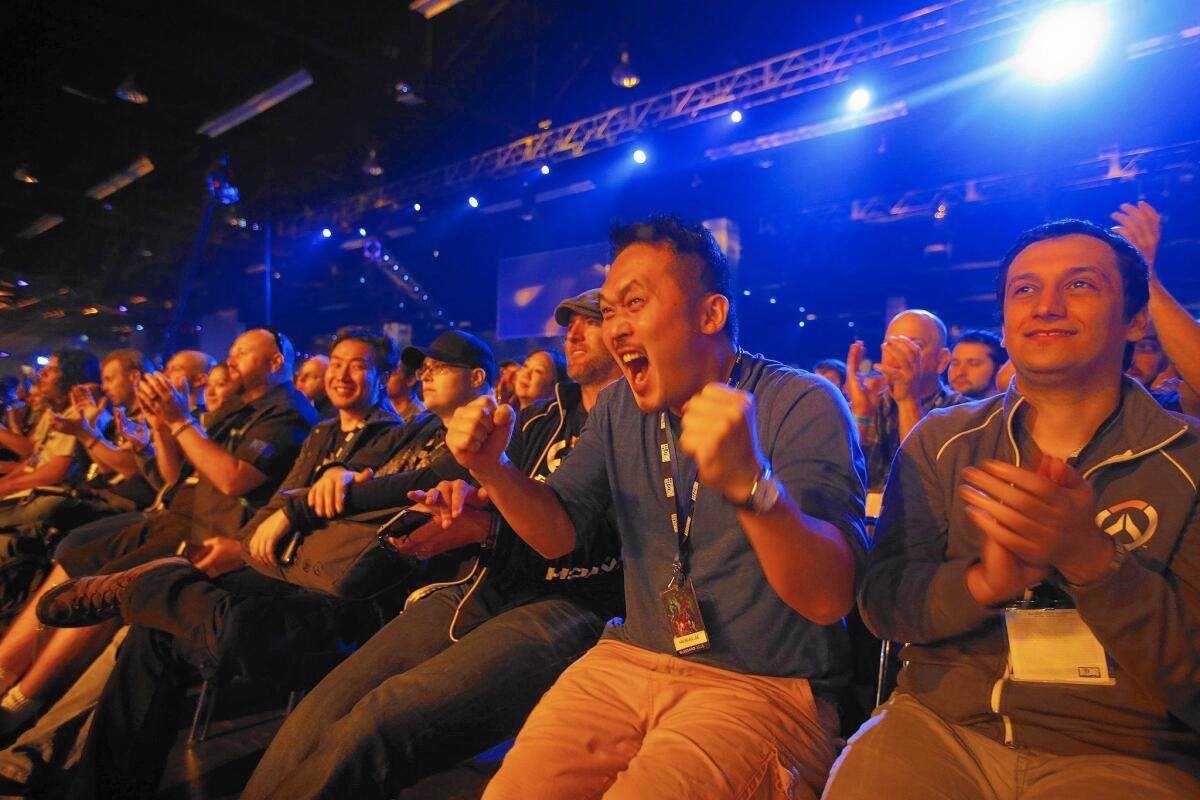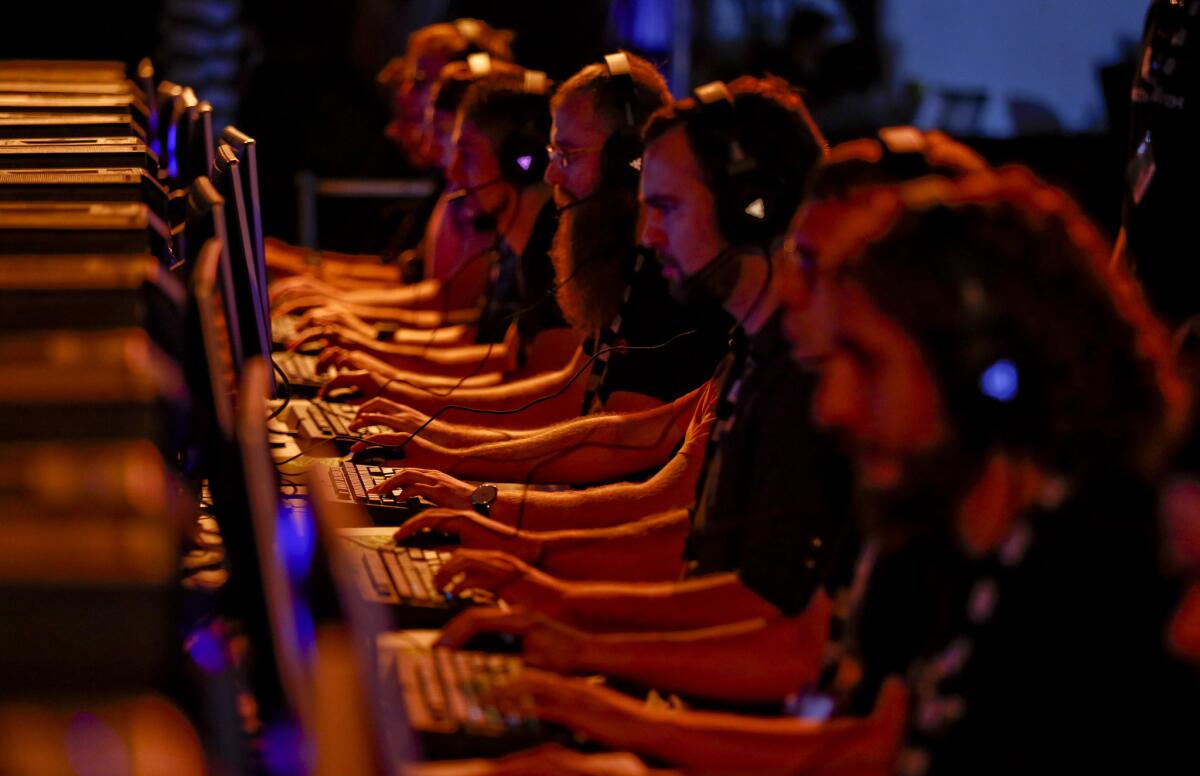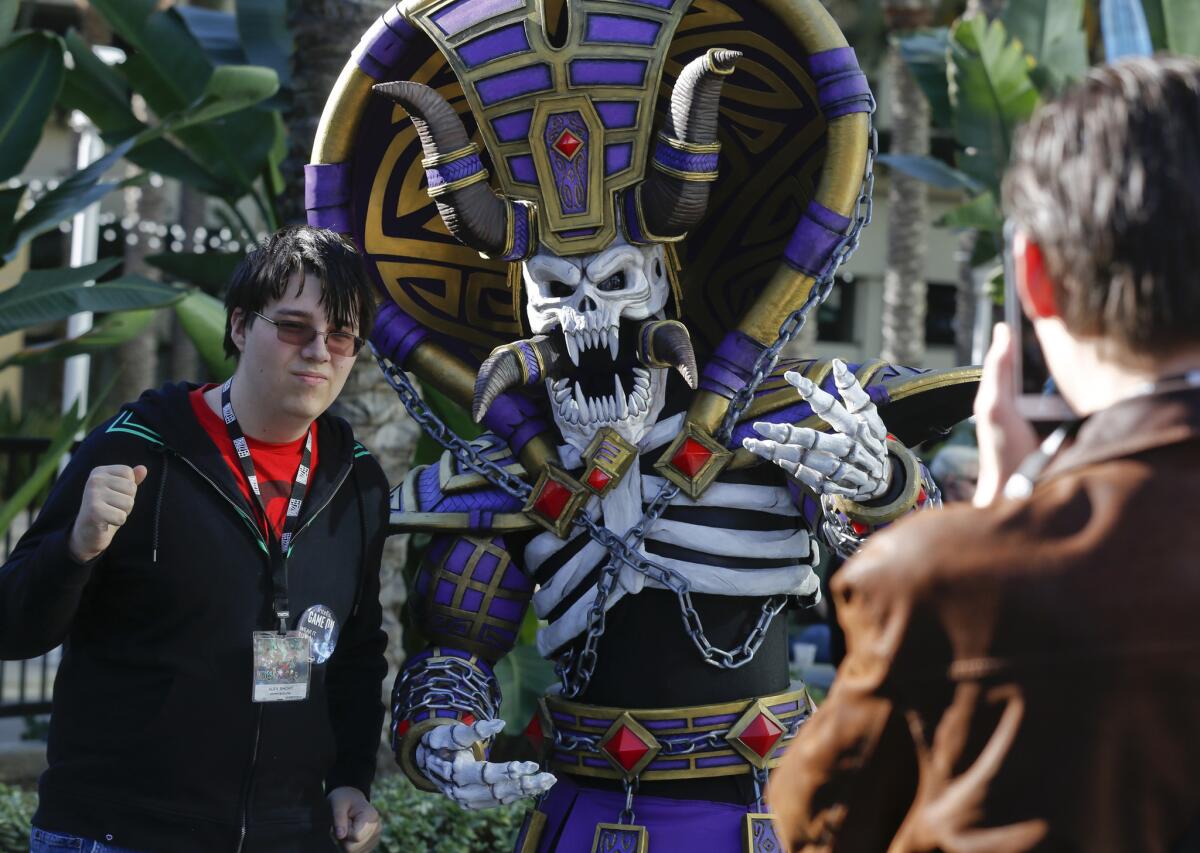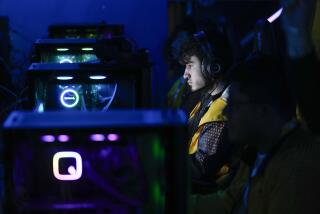Building a bigger arena for video game competitions

Fans show their excitement after hearing new game announcements at Activision Blizzard’s BlizzCon event in Anaheim.
Steve Bornstein, former chief executive at ESPN and NFL Network, walked toward his seat in a hazy convention hall buzzing with 20,000 people in Anaheim on Friday, mouth agape and eyes wondrously staring at a crazy array of green and white spotlights overhead.
He turned toward the middle of a 300-foot-wide stage in front of him, then to the colleague by his side. “This is amazing,” he whispered. He shook out what seemed like goose bumps and squished into a metal chair.
Bornstein was making his appearance at the opening ceremony of the BlizzCon gaming convention, held annually by video game giant Activision Blizzard Inc.’s Blizzard Entertainment division, just weeks into his new job at the Santa Monica-based company.
As chairman of its new Media Networks division, fresh off his stint building NFL Network from scratch, his mission is to do for live video game competitions what’s been done for major spectator sports: filling arenas with rabid fans and cutting deals to get the contests on TV, computers and mobile devices. Oh, and raking in revenue from tickets and subscriptions and selling advertising time. The phenomenon is known as e-sports, it’s pulling in $600 million a year, and people like Bornstein think it’s just getting started.
Media Networks is part of an aggressive three-prong entertainment business growth strategy by Activision Blizzard, which traces its roots to the original Atari video game player in the 1970s. Earlier this week, the company said it will buy mobile games company King Digital for $5.9 billion. On Friday, it announced creation of its own movie and TV studio. The creation of the Media Networks division is the third prong.
Before taking his seat at the opening ceremony, Bornstein and Senior Vice President Mike Sepso discussed the company’s e-sports plans with analysts and investors.
“It’s one of the most intriguing business opportunities I’ve ever seen,” Bornstein said, recalling how his two 11-year-old sons’ love for Activision’s “Destiny” game inspired his interest. “I always like to skate to where the puck is going, and it’s clear we’re in the first inning of this game.”

Game players try out new games and features at at BlizzCon on Friday.
A key challenge, the pair said, is expanding the idea of spectator video games from hard-core gamers to a mainstream audience.
Media Networks, Sepso said, will create highly produced content, invest in “organization and infrastructure” to professionalize the sport, and distribute events beyond early e-sports havens such as Los Angeles and the streaming video app Twitch.
“What we’ve been tasked with is to grow something very big,” Sepso told The Times. “And they haven’t put much restraints on what we can do.”
Whether that means Activision Blizzard will launch an “e-sports Network” on TV, develop a competitor to the popular online video service Twitch or create an international gaming league is unclear. But it’s clear Activision Blizzard aims to challenge companies such as “Dota” maker Valve Corp. and “League of Legends” developer Riot Games Inc., which have been aggressively expanding into e-sports.
That might help elevate the games’ exposure enough to create a new class of celebrity.
“When we look at the time, investment and commitment our players are making, there’s no reasons those players shouldn’t be celebrated the same way as other athletes,” Activision Blizzard Chief Executive Bobby Kotick said Friday morning to a small group of analysts, investors and media.
Activision Blizzard has been in the e-sports and events business for more than a decade, but it’s been a tiny part of this business. Now it plans to bust out.
In 2005, Irvine video game company Blizzard Entertainment’s inaugural BlizzCon mixed two big tournaments into the usual convention fare of speeches, panels and product demos. Sixteen of the world’s best gamers battled at computers on small stages, with four of them collectively winning $26,000 for their prowess in “StarCraft” and “Warcraft III.”
This year, with Blizzard now a part of Activision, BlizzCon will see $1.25 million in prizes awarded to the best players across a handful of games. The events have steadily been getting bigger and better. With Activision Blizzard expecting the industry to generate $1 billion in e-sports revenue in 2018, it doesn’t want to miss out.
But creating structure in a fragmented industry won’t be easy or cheap for Activision Blizzard, said Jeremy Miller, director of quantitative analysis at DFC Intelligence, a gaming consulting firm.
“They have to have a real serious plan to have a path to profitability that is much shorter than what Riot’s path has been,” he said.

Fan Michael Casteel wears his “World Of Warcraft” costume while other fans pose for photos of him during BlizzCon at the Anaheim Convention Center on Friday.
Advertisers are wary, ad agency executives said, because there’s no international governing body for e-sports and thus a limited sense that everything’s on the up and up. And though the audience is large in aggregate, the individual games and viewing platforms create niches that are, at least for now, hard for advertisers to evaluate.
Good games are fundamental to success, said Mitch Lasky, an early investor in Riot Games and a former Activision executive. He’s excited about new e-sports ventures, but cautious.
“There’s a danger this phenomenon is ‘League of Legends’ and a bunch of imitators,” he said. “I’ve seen dozens of really dumb companies trying to go after the e-sports opportunity in some cynical way or another, building talent agencies, endorsement marketplaces ... any crazy, cockamamie idea you can imagine.”
Twitter: @peard33







